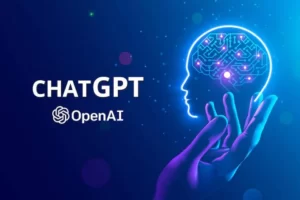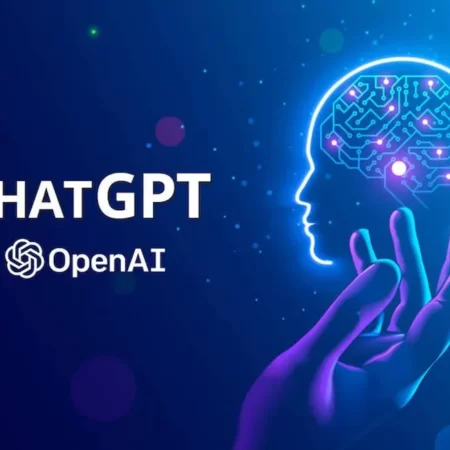Revenue growth of cloud computing giants slowed again in the first quarter. But companies like Microsoft ( MSFT ) and Google parent Alphabet ( GOOGL ) are looking to new services tied to artificial intelligence software and generative AI to boost sales growth.

The technology giants believe that the slowdown in the growth of cloud services is due to the fact that companies are rethinking how to use cloud services most effectively instead of large bills.
In the “public” cloud market, customers rent servers and storage as needed. Cloud giants sell processing power and data storage by the hour, week, month or year. “There has been a clear shift in IT spending and many customers are increasingly selective in their (cloud) investments,” Susquehanna analyst Mehdi Hosseini told customers heading into earnings season. “After rushing to move to the cloud, companies are now finding that the cloud is more expensive than expected. (And) they often lose control over the performance of critical applications.”
So the tech titans are focusing on how to get customers to use cloud services more. This is where artificial intelligence software comes into play. This can help cloud customers innovate and develop new products. “AI-focused workload investments could significantly increase cloud consumption,” UBS analyst Lloyd Walmsley said in a recent note about Amazon.com ( AMZN ), which is also struggling with slowing cloud growth.

How cloud computing slows down
Take a look at the revenues of these cloud giants.
Microsoft said on Tuesday that revenue from its Azure cloud services rose 31 percent to $14.52 billion in the third quarter, slowing growth from 46 percent a year earlier. In addition, Microsoft is forecasting cloud growth of 26-27% for the June quarter. This is slightly below the 28 percent estimate. But Microsoft said its forecast for Azure cloud growth of 26 to 27 percent in the June quarter includes 1 percent of revenue from new AI services. It’s also the first time Microsoft has boosted AI revenue in the cloud business.
Microsoft said it had 2,500 customers on its OpenAI Azure cloud service in the March quarter, 10 times more than in the December quarter.
“This is evidence that Microsoft is becoming the Intel within AI, and that could provide a lot of leverage,” MoffettNathanson analyst Sterling Auty said in a recent note.
Microsoft is the largest investor in the startup OpenAI. It launched ChatGPT online search engine in November. In addition, ChatGPT has sparked interest in generative AI technologies. They create their own text, images, videos and computer program code.
Google, meanwhile, reported a 28 percent increase in cloud services revenue to $7.45 billion in the March quarter, slightly missing estimates for $7.46 billion. The turnover of Google’s cloud business increased by 44% compared to the previous year. Amazon’s earnings deadline is Thursday. Cloud business Amazon Web Services reported a 37 percent increase in revenue in the first quarter of 2022. AWS revenue is expected to grow by about 15 percent in March 2023.

The battlefield of artificial intelligence in cloud services
Artificial intelligence technology uses computer algorithms. The purpose of the software is to mimic human learning, interpret patterns and make predictions. The latest forms of artificial intelligence also produce content.
Evercore ISI analyst Mark Mahaney said in a note that generative AI workloads could adopt the cloud in the next 12 to 18 months.
“Artificial intelligence can open up new potential cloud workflows and help accelerate demand for cloud services,” Mahaney said. “AI will drive revenue to the cloud as IT spending on innovation projects continues and increases. Cloud customers are looking to generative AI to create new customer experiences that lead to greater revenue opportunities.”
Baird analyst Rob Oliver shares a similar view. “The emergence and accelerating adoption of generative AI is creating new and intense competition among the leading cloud computing platforms,” he said in the note.
In addition, generative artificial intelligence technology is rapidly finding applications in marketing, advertising, drug development, legal contracts, video games, customer support and digital art.
Microsoft has been offering an Azure cloud service using OpenAI’s generative artificial intelligence technology since January. According to a report from BMO Capital Markets, Azure customer CarMax (KMX) is using Azure OpenAI to generate text summaries for its car research pages.
“To adopt cloud intelligence in the enterprise, customers must hand over their data to Microsoft to develop AI models,” BMO analyst Keith Bachman said in a report. Amazon’s new AI cloud service
He added: “We believe advances in generative AI will result in more organizations adopting or expanding AI workloads, although the revenue impact of Azure, AWS and GCP will likely be longer-term than short-term.”

In addition, natural language processing or NLP tools train generative artificial intelligence models by consuming Internet content. By analyzing online data, NLP tools generate answers to questions. OpenAI is also part of the initial wave of NLP. These include AI21 Labs, Anthropic, Cohere, Hugging Face, DeepL and others.
Meanwhile, AWS just announced a new cloud service that offers access to AI tools from AI21 Labs, Anthropic and Stability. Amazon also offers its own foundational models. Google’s cloud computing arm has partnered with Cohere to offer AI services. Google also has its own NLP tools to train AI models.












No Comment! Be the first one.